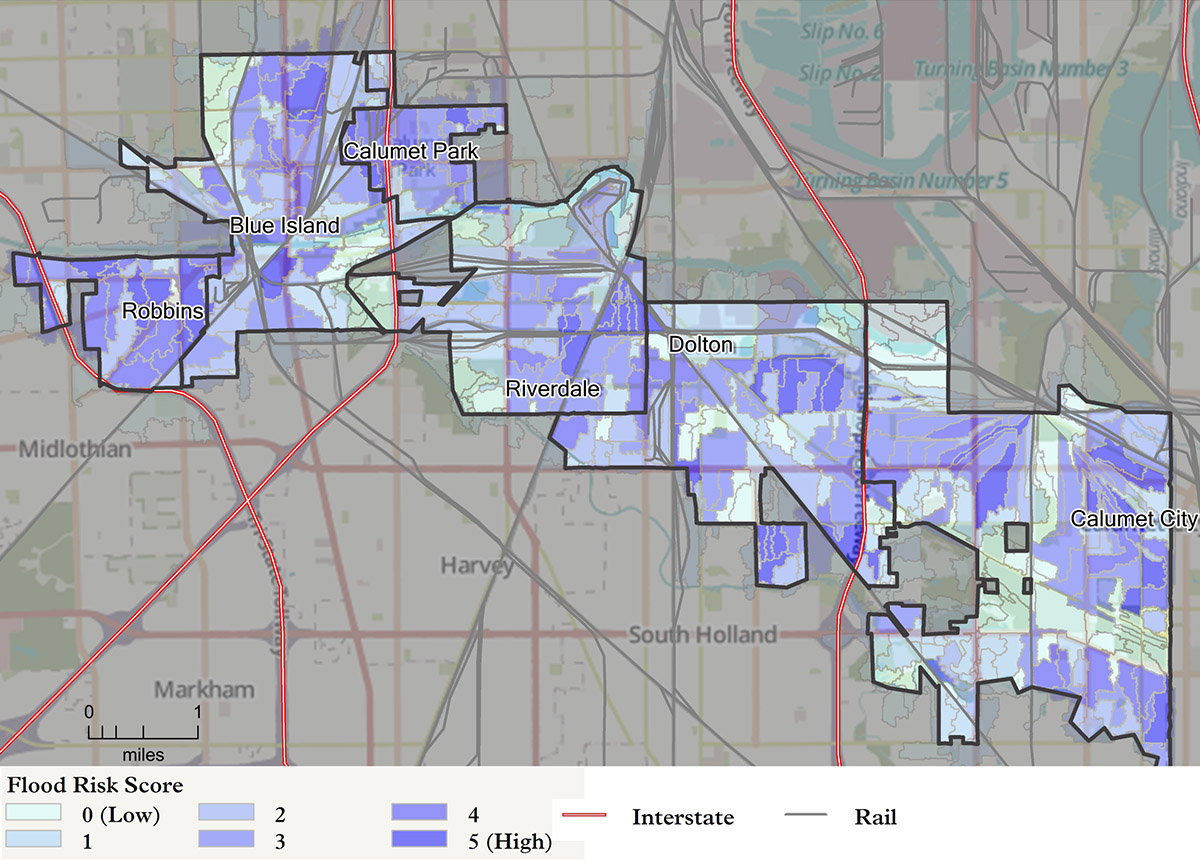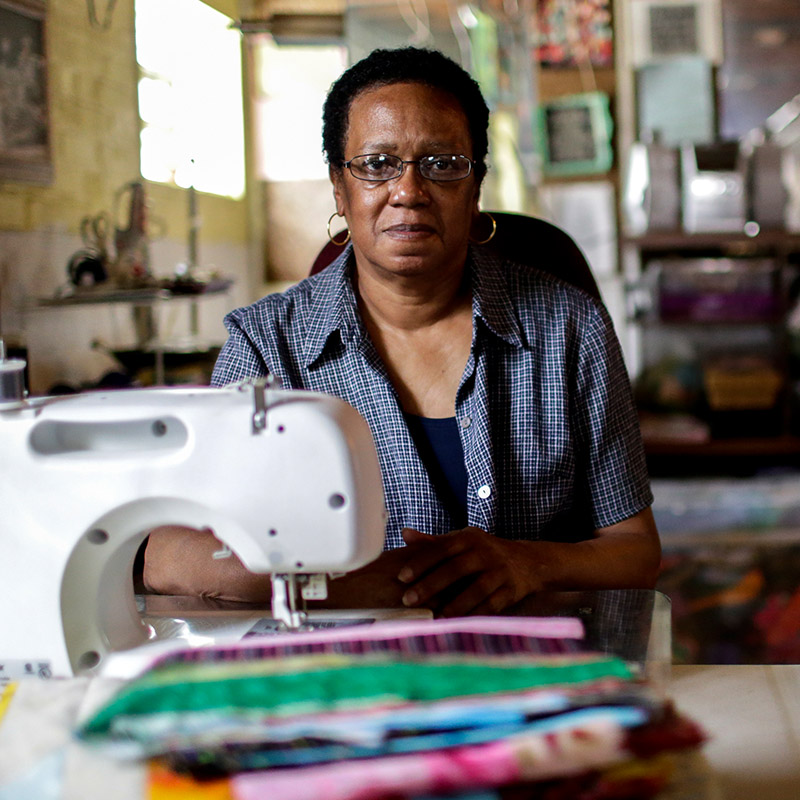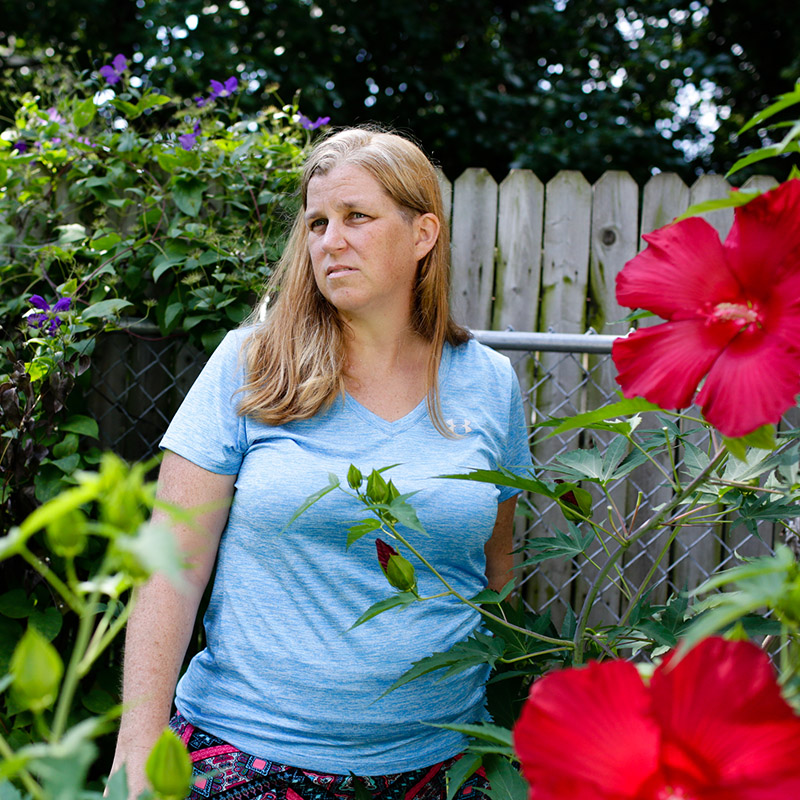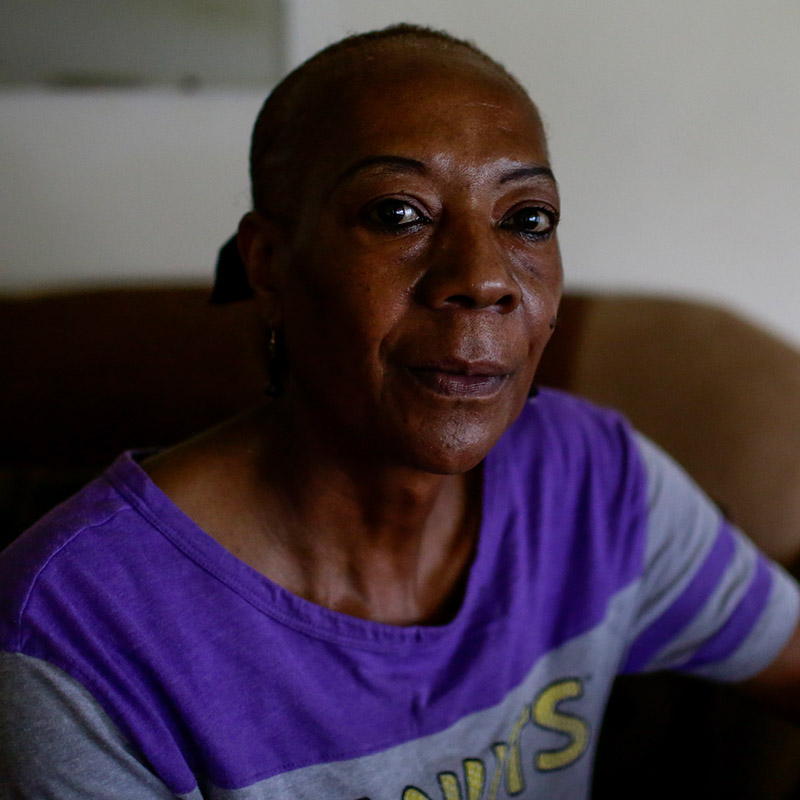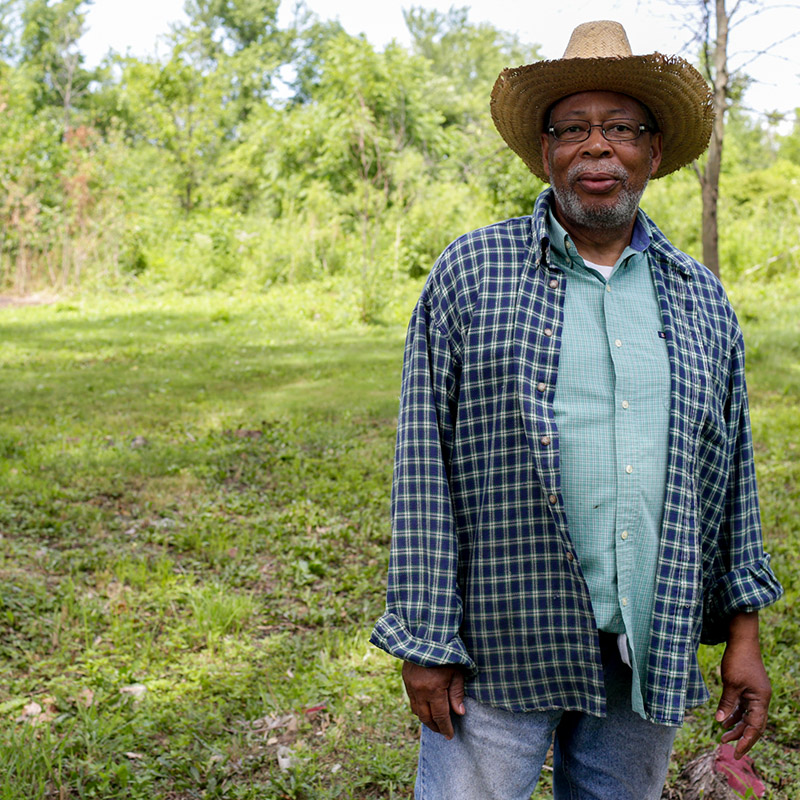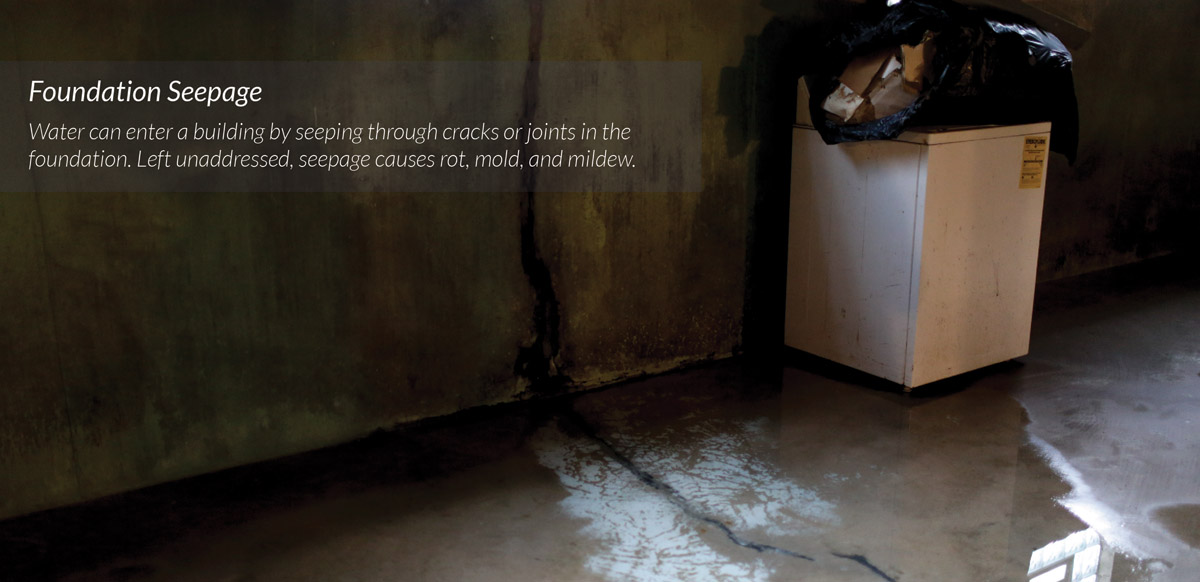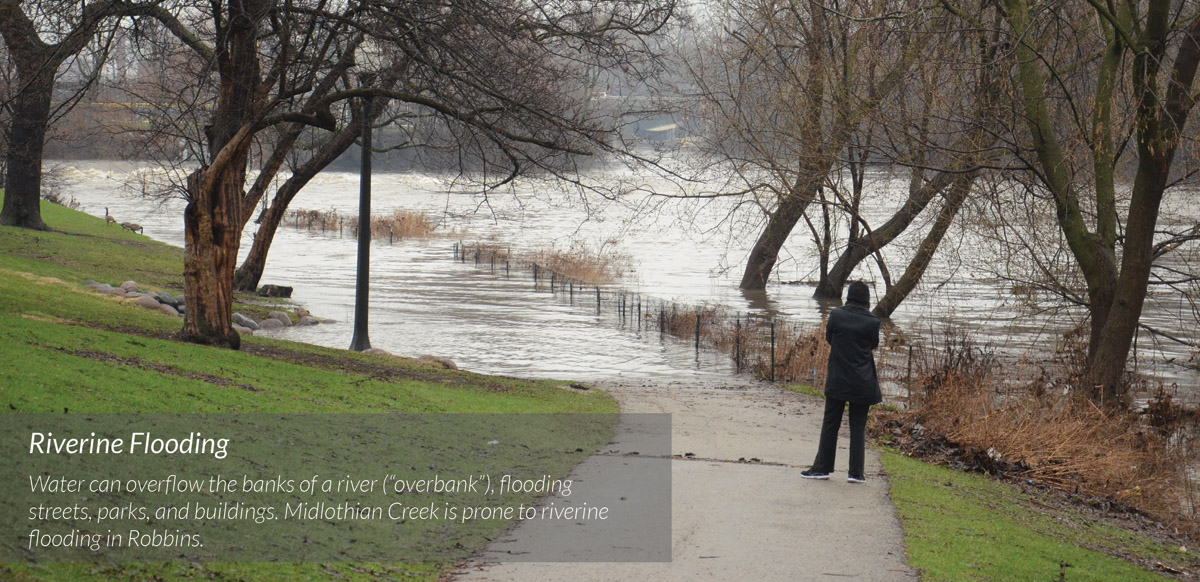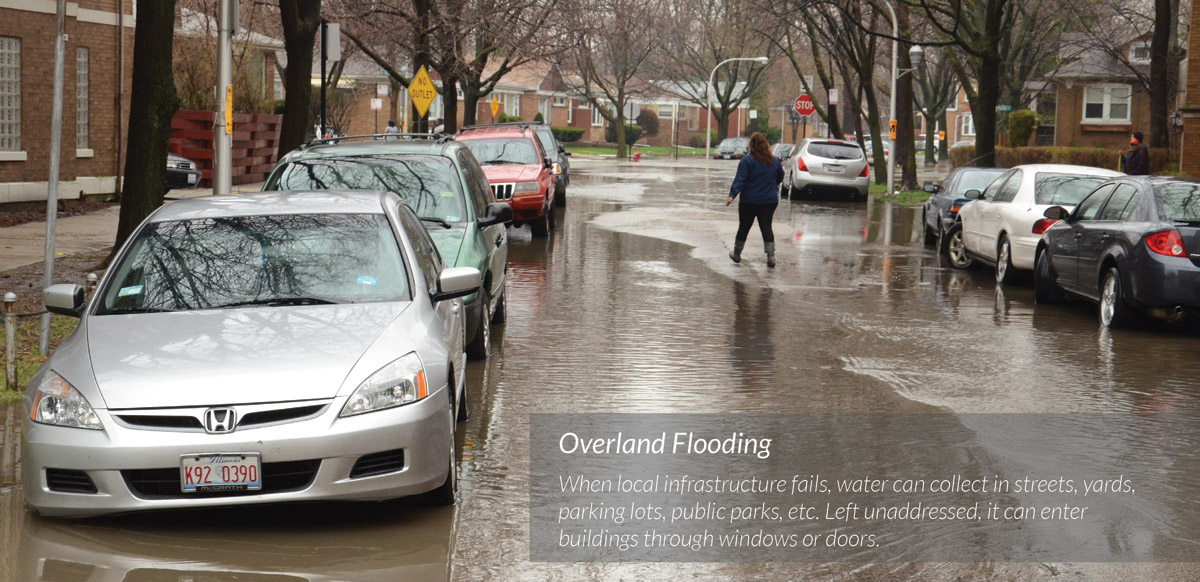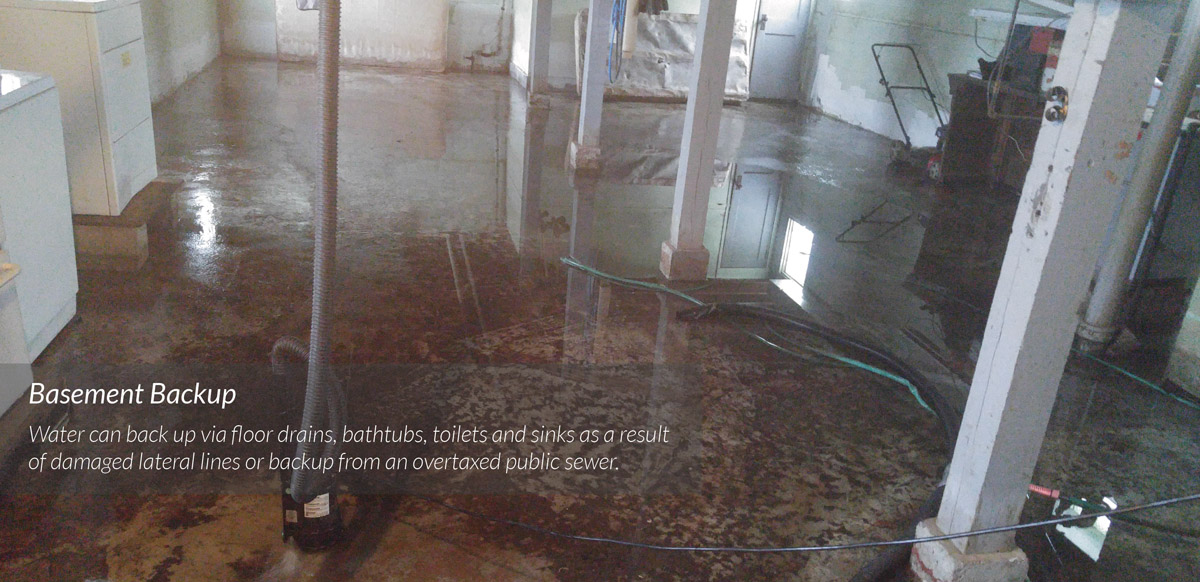-
Mitchell-Price Household, Calumet Park
Mrs. Mitchell-Price laughs when asked if she has a finished basement, “I just use it for
a sewing space and that’s where I do my crafts. Now I’ve just learned… Everything is in
plastic totes and most of the items are off the floor.”
Each week, the Price household follows a familiar routine: rain, watch the basement,
flood, watch it recede, pour down bleach, mop it out, rinse and repeat. Mrs. Price and
the neighbors even have a rain hotline.
When the backup starts, Mrs. Price calls her neighbor, who has about 10 minutes
before the sewage bubbles up at her home.
The foundation cracks have been sealed, but the Price basement still gets sewage
backup. “Not everybody has ten thousand to invest into an overhead sewer or even
five thousand for something else,” says Mrs. Price. Recent storms left the Prices in
waist-deep water; their central air and furnace still have not been replaced.
Catrina Farr, Calumet City
Catrina Farr is one of the lucky ones. Two years ago, the Calumet City resident was able to come up with the $6,900 needed to install an overhead sewer system at her home.
She also paid to have her basement retarred around the exterior perimeter, a method sometimes used to stop seepage. None of that, however, helps her with her dream deferred: Ms. Farr planned to create a fashion line in her basement and bring in seamstresses to work in the space over the weekends. With the constant seepage and mold, she has not been able to realize this dream.
“It’s been horrible,” says Ms. Farr. “I’ll be honest. When I bought the home, I was told I wasn’t in a flood zone, so I didn’t get the flood insurance. So I had to take a loss.”
Ms. Juskevice, Blue Island
When Lili Juskevice bought her two-story stucco home, she never imagined that she’d spend the next 14 years fighting sewage and seepage in her basement. But she has. At times, it’s gotten so bad that after she and her daughter mopped up the muck, they immediately got sick.
“I’ve been here about 14 years and I’ve had trouble with floods for 14 years,” says Juskevice. “It’s to the extent that I don’t remember a year where it hasn’t flooded in my basement. The problem is now I have a medical issue and I can’t clean up my basement like I should be able to, and that’s a challenge.”
Juskevice has spent at least $8,000 on repairs and flood prevention measures. “I did a backflow check valve system, installed by a plumber. That supposedly would stop anything from coming back up into my house from the sewers,” she says. “I did that last year or two years ago, and still have had flooding.”
Peggy Scott, Riverdale
Peggy Scott remembers one Saturday morning when plumbers worked from morning until 11:30 pm rodding her lateral line. “They didn’t give up. I told them, ‘please don’t give up.’”
Ms. Scott guesses there was about five feet of water in her basement that day, but she clearly remembers the bill that day: $460. Include the furnace Ms. Scott had to replace, the water heater, washing machine, deep freezer, and other personal items damaged by flooding, and Ms. Scott’s basement flooding problem has cost her more than $5,000.
Still, Ms. Scott doesn’t hesitate to say, “I love my home. I want to get this fixed.”
Mr. Evans, Dolton
A few years ago, Mr. and Mrs. Evans of Dolton began to notice a change in their backyard: during each big storm, a small pond will form where water runs off the expressway and into his backyard. In the front of the house, water fills the streets. Last year, Mr. Evans built a platform to help school children get off the bus without stepping in the floodwaters, “I would look out my window and see their little feet getting wet in all that water.”
Mr. Evans has faced many challenges related to the flooding: water degraded his foundation; a ComEd box sunk into the pool, creating safety concerns; not to mention, “The mosquitos are so bad.”
“If you don’t complain no one knows you have the problem.”
Types and Causes of Flooding
Broadly speaking, there are four primary factors contributing to flooding in the Calumet:
Increasing impervious surfaces
When natural spaces like prairies and wetlands are replaced by impervious surfaces like streets, parking lots,
and buildings, rain is prevented from infiltrating (sinking) into the soil and being sent back into the atmosphere
by plants and trees.
Flat topography
Thanks to the glaciers that melted into Lake Michigan some 16,000 years ago, the Calumet Corridor is notably
flat. Since we rely heavily on gravity to move stormwater within suburban environments, this flatness can cause
water to drain slowly and pool in streets and yards.
Changing climate
Many residents of the Calumet Corridor have noticed an increase in heavy rains, particularly the high-intensity,
short-duration storms associated with global climate change. This trend is projected to continue through this
century, causing both more rain to fall over the year and more frequent heavy storms.
Aging and undersized infrastructure
As sewer systems age, pipes may collapse, crack, or clog, causing issues with local drainage. Moreover, many of the local sewer systems throughout the Calumet Corridor were designed for a different time, prior to the dramatic increase in impervious surfaces,
and the big storms associated with climate change. Many of the combined local sewers are simply too small to
handle the volume of water they now receive.
Each of these factors contributes in varying ways to four main types of flooding: overland flooding; riverine;
basement backups; and foundation seepage.
What We’ve Found
The map below summarizes flood risk for all catchments within the Calumet Corridor. The map takes into account survey data, reported flood areas from residents and public officials, FEMA floodplains, and local topography. The darker the purple, the higher the flood risk.
